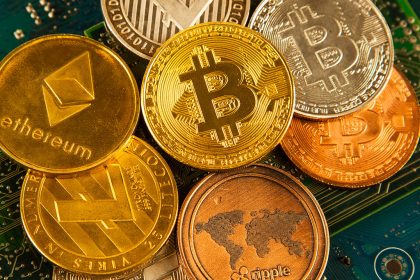The rate of inflation in the United States and many other parts of the world continues to rise, given the effects of the COVID–19 pandemic, global warming, the War in Ukraine, and other factors. By January 2022, the inflation rate in the US stood at 7.5%, a quick jump from December 2021 when it was already at 5.9%.
Stocks and fiat money (like the US dollar and all national currencies) are highly affected by inflation, losing their value as more people are attempting to sell their shares to make ends meet amidst the increasing costs of living.
As an investor, your confidence is likely to go down, especially if your money is tied to growth stocks.
How Decentralized Finance (DeFi) Improves Investor Confidence During Inflation
Before figuring out how DeFi assets and tools benefit you during inflation, first, you need to understand what inflation is.
Inflation is the rate at which the prices of goods and services rise. It’s usually measured as an annual percentage increase. For example, if inflation is running at two percent, a good that cost one hundred dollars last year would cost one hundred and two dollars this year.
Inflation happens when there’s too much money chasing too few goods and services. This puts upward pressure on prices. When this happens, the value of each dollar you have falls.
So, what does this have to do with decentralized finance?
DeFi assets are built on the blockchain which is a decentralized network. This means that there is no central authority controlling these assets. Instead, they are controlled by the code that runs on the blockchain.
In short, DeFi refers to the shift from traditional financial systems (TradFi) that are centrally controlled to peer-to-peer finance enabled by decentralized technologies built on the Ethereum blockchain.
This is important because it means that DeFi assets are not subject to the same risks as traditional assets. For example, if there is a country with high inflation, the value of that country’s currency will go down. But, because DeFi assets are not subject to this risk, their value remains stable.
This makes DeFi assets a more attractive investment during periods of high inflation. With traditional assets, you would need to worry about the value of your investment going down. But with DeFi assets, you can be confident that your investment will retain its value.
Hedging against Inflation
Cryptocurrency instruments such as Bitcoin are regarded as deflationary assets. As an investor, you can bank on them to hedge against an inflationary financial market.
Contrary to traditional financial systems, DeFi tools are hard to manipulate through overprinting or interest rates fluctuations.
For example, the supply of bitcoins in all cryptocurrency trading and investment platforms will never surpass a constant amount which is set at 21 million. This limited, finite supply helps cryptocurrency and other DeFi assets resist inflation.
How Cryptocurrencies Hedge against Inflation
Most investors buy cryptocurrencies because they are promising investment tools which can help investors hedge risks and serve as good alternatives to fiat currencies, stocks, shares, and other TradFi investment assets. Crypto diversifies your portfolio.
Several institutional and individual investors have recently turned to DeFi tools such as structured deposits, liquidity pools, and other crypto assets to hedge their investments against increasing inflation. These assets act as a cushion to rising product prices and the diminishing value of fiat currencies.
DeFi analysts and other economic experts also share the sentiment that investing in alternative and universal currencies such as bitcoin may be an answer to most of the United States’ current inflation crisis which recently hit the highest rate in 36 years.
Other countries like Turkey are also being advised to adopt digital assets to make up for the weakening of the Lira (TRY), their national currency.
Most importantly, you should understand how cryptocurrency and DeFi assets will save you from incurring investment losses during inflation.
Why Crypto Is Immune to Inflation
When seeking an alternative to the traditional bank-regulated or centralised economy, cryptocurrency should be your first priority investment.
The following factors boost the immunity of digital assets against inflation.
Finite Supply
The primary reason why your decentralized bonds, structured deposits, and digital assets withstand inflationary pressures is their finite supply. The number of assets in circulation can never be more than their original production since they are limited to a fixed number of tokens.
Old coins cannot be eliminated from circulation while it is also impossible to introduce new ones. This balance keeps decentralized assets under сontrol, increasing their power to combat inflation.
In comparison, the supply of money and traditional financial assets can increase or decrease depending on the level of expenditure or currency purchasing power. Governments can lower or raise the money in circulation, raising or lowering interest rates, or holding back money to prevent circulation. This lowers people’s spending power, leading to inflation.
Decentralization
Fiat currencies are centrally managed by central banks, such as the Federal Reserve for the US dollar, the European Central Bank for the euro, or the People’s Bank of China for the Chinese yuan (renminbi).
Central banks – in close cooperation with the government – decide how much money should be in supply and when it should be held back in order to avoid high inflation rates or meet certain monetary and economic targets.
For example, traditional bonds offer debt securities in which an investor loans money to a (typically governmental) entity for a defined period of time. Their interest rates are fixed, meaning that the borrower pays back the original loan plus interest at a predetermined rate.
The problem with traditional bonds is that they are no longer safe investments. Inflation rates have been on the rise in recent years and are expected to continue to increase in the years to come.
Contrastingly, cryptocurrencies operate in a decentralized system. This means that you can trade, transact, and dispose of your assets transparently without a central body monitoring your activities on DeFi platforms. You can track your assets’ yields in real-time.
The decentralization of cryptocurrencies and digital assets has brought many benefits to users and investors. One key benefit is that it helps to avoid centralized points of control and risk. For example, if a government decides to ban cryptocurrency trading, investors can still trade digital assets peer-to-peer on a decentralized exchange.
Another benefit of decentralization is that it increases transparency and immutability – two key characteristics of blockchain technology. By using smart contracts, DeFi platforms can automate transactions and enforce the terms of agreements. This removes the need for a centralized authority to mediate transactions which can often be slow and expensive.
Decentralized bonds are one of the major innovations in DeFi. They allow direct fundraising and trading on the blockchain. This approach combines high security with absolute transparency and the lack of intermediaries. You can use decentralized bonds to hedge against inflation.
An excellent example of a decentralized bond solution is Debond which offers users a platform to buy decentralized bonds transparently and have stable assets in their accounts, empowering individual investors to hedge against rising inflation in TradFi.
A big advantage of Debonds is that they are flexible assets: you can invest into them and wait for the maturity date to earn interest on your investment – or sell them in advance for the market price (hopefully, with profit). Prime, fixed-rate Debonds have guaranteed interest payments – something that is not yet available in DeFi anywhere else.
Importance of DeFi During Inflation
When inflation hits, most investors want to understand how DeFi can help hedge against it and know how it helps them safeguard and grow their investment.
The answer – DeFi provides a decentralized way to store, trade, and borrow assets.
Decentralized assets offer an alternative to traditional investments, which are often more vulnerable to inflation. They are designed to be deflationary, meaning that their supply is limited and cannot be increased arbitrarily. This makes them a much more attractive option for investors looking to protect their wealth from inflation.
When inflation hits and the value of traditional assets such as stocks and bonds falls, the value of decentralized assets such as crypto tokens tends to rise. This is because DeFi provides a way for investors to hedge against inflation by locking up their capital in a decentralized manner.
For example, when inflation hits and the value of stocks and bonds falls, investors can sell their traditional assets for crypto tokens. They can then use these crypto tokens to trade on decentralized exchanges or to borrow against them on decentralized lending platforms.
In addition, decentralized assets often offer a higher degree of transparency than traditional investments. This means that investors can be more confident that their money is being used in the way they intended it to be used.
Accessing Affordable Credit
Getting a loan or other modes of financial assistance may result in hefty interests during inflation. Governments’ fiscal policies can also prevent specific groups of borrowers and investors from taking or investing.
For example, during the 1997 Asian Financial Crisis, the Indonesian government froze all bank loans. This was an effort to prevent borrowers from running away with their debt and leaving lenders in the lurch.
In contrast, decentralized assets are not subject to these risks. They are not under the control of any central authority which means that they cannot be arbitrarily frozen or taken away. This makes them a more attractive option for investors looking to protect their wealth during periods of inflation.
Decentralized assets also have the potential to provide a hedge against inflation. This is because their supply is often limited, which means that their value could increase as demand for them increases.
Now, solutions like Debonds offer a stable alternative. DeFi tools and cryptocurrencies have decentralized lending and borrowing with smart contracts and collateral – making sure interest yields and principal repayments are safe.
Disclaimer: Coinspeaker is committed to providing unbiased and transparent reporting. This article aims to deliver accurate and timely information but should not be taken as financial or investment advice. Since market conditions can change rapidly, we encourage you to verify information on your own and consult with a professional before making any decisions based on this content.

Devan is a crypto trader and Bitcoin enthusiast. He does his best to keep up to date with all the latest trends and innovations in the blockchain industry and likes sharing his expertise.





